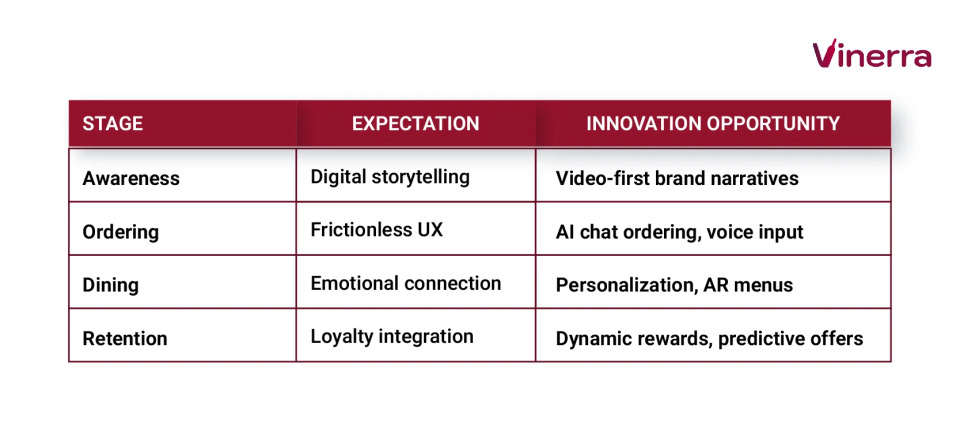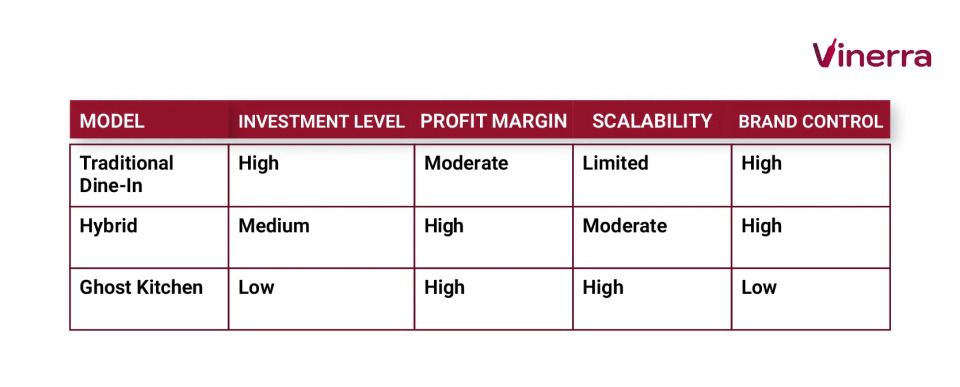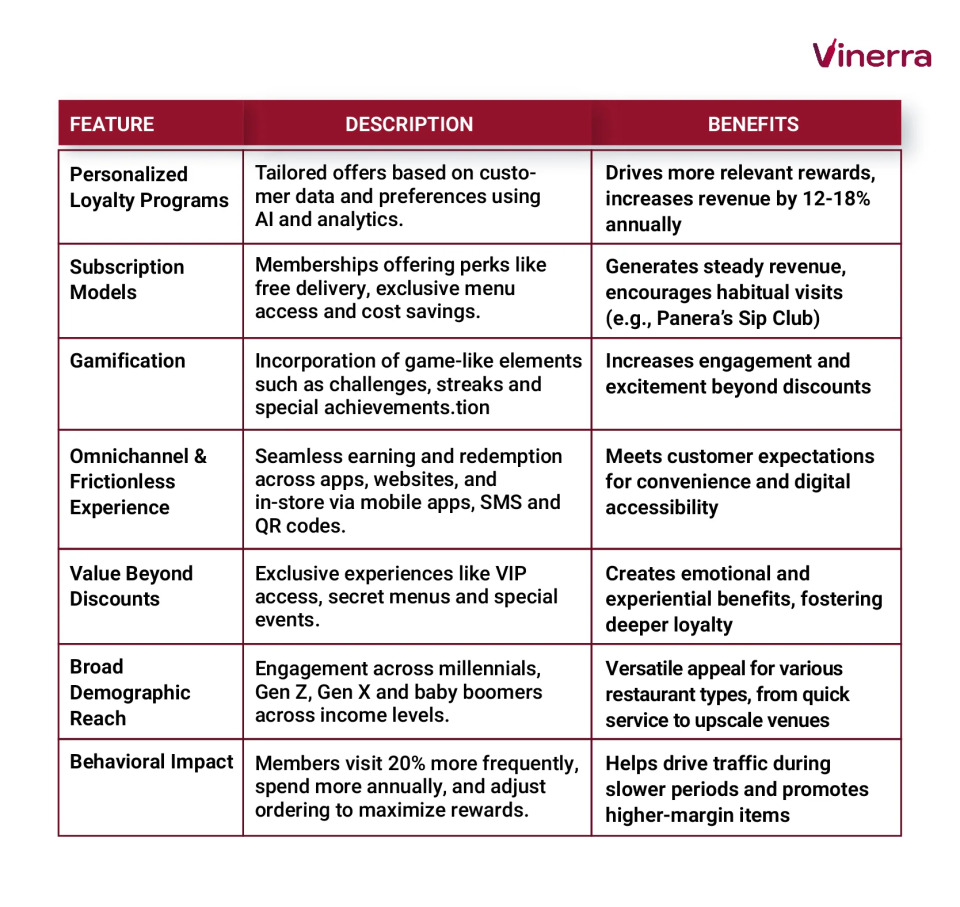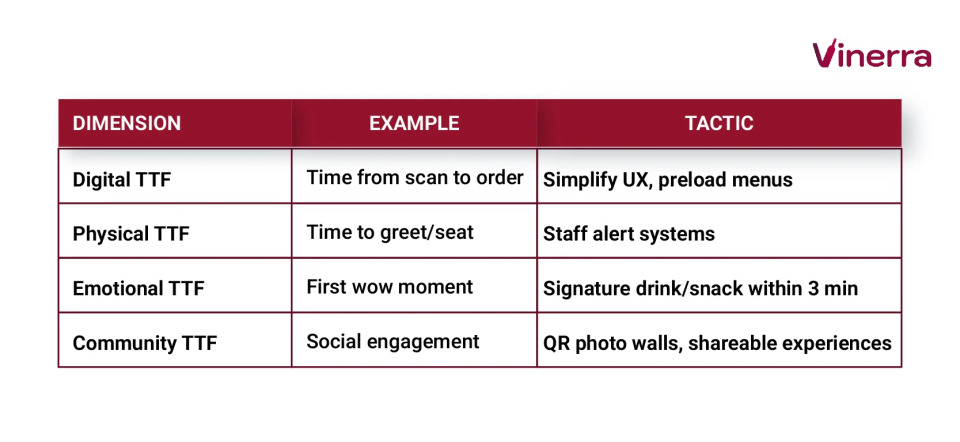
The restaurant industry is undergoing a significant transformation due to rising costs, shifting consumer expectations, and rapid technological advancements. The industry has entered what can only be called the Singularity of Dining — a convergence of technology, data, sustainability and experience.
Assessing the current state of the restaurant industry, especially in terms of technology adoption and sustainability performance, provides a crucial baseline for identifying opportunities and planning for the coming transformation.
Since 2020, the hospitality industry has been forced to undergo a decade of innovation in half the time. Restaurant leaders, along with industry leaders who are guiding the sector through these significant changes, have been compelled to prioritize innovation, customer experience, and operational efficiency to achieve success. The majority of restaurant operators plan to invest in technology to enhance customer experiences and streamline operations, with 86% of them expressing a strong desire to improve the guest experience through such investments. Additionally, 88% of restaurant leaders would like to invest in solutions that help them streamline orders placed online, in person, and through delivery apps.
The result? A new rulebook for survival and scale.
But it is not all doom and gloom. Consumers are craving experiences. Global restaurant revenues are projected to exceed $5.4 trillion by 2030, with digital-first brands capturing the majority of growth. However, the intent to spend on restaurants is lower than it was two years ago, leading to increased bankruptcies in the industry. In fact, 62% of consumers report spending less on restaurant purchases due to economic pressures.
Canada: The Canadian restaurant industry, in particular, is facing unique challenges and opportunities in the new era. Canada, with its diverse demographics and tech-savvy consumers, has emerged as a laboratory for hybrid dining models — where ghost kitchens, QR-based ordering, and dynamic menus coexist with farm-to-table authenticity.
Your challenge as an operator is no longer just food quality or location. It’s about mastering the new currency of experience: time, personalization, and convenience. The future belongs to restaurants that integrate technology without losing humanity.
⚡Provocation: The next Michelin star won’t just reward flavour; it’ll reward data fluency and empathy.
QSRs are at the forefront of embracing technology and innovation to meet the evolving expectations of consumers. Facing rising costs and labour challenges, QSRs invest in automation and digital tools to boost operational efficiency and customer experience. Self-service kiosks, mobile ordering apps, and AI-driven menu optimization help streamline orders and cut wait times during busy periods.
Drive-thrus remain vital, with enhancements such as high-capacity lanes, AI voice ordering, and digital menu boards that offer dynamic pricing and personalized promotions. These improvements speed service, increase accuracy, and enhance profitability.
Gen Z consumers, valuing customization and convenience, are reshaping the QSR market. Brands respond with mix-and-match menus, app-based loyalty programs, and tailored promotions using real-time data. Partnerships with delivery platforms like Uber Eats expand reach and revenue beyond dine-in traffic.
Additionally, QSRs adopt the multihyphenate business model, diversifying revenue through merchandise, meal kits, and subscriptions, building resilience amid economic pressures and shifting consumer behaviour.
Casual dining restaurants are evolving to meet modern consumer demands by focusing on a welcoming atmosphere and innovative menus. Operators emphasize menu flexibility, incorporating healthy, sustainable, and locally sourced ingredients to align with wellness and environmental trends.
The fast-casual segment, a growing part of the casual dining industry, offers high-quality, quick, and customizable options. These restaurants utilize technology, including mobile apps and QR code ordering, to enhance convenience and streamline operations.
Casual dining operators invest in loyalty programs with exclusive discounts and personalized rewards to drive repeat business. Many adopt hybrid models that combine dine-in, takeout, and delivery services to diversify revenue streams.
Sustainability remains a top priority, with a focus on minimizing food waste and utilizing eco-friendly packaging materials. Automation technologies are increasingly being adopted to enhance efficiency while maintaining a personal touch.
Overall, casual dining bridges the gap between fast food convenience and fine dining quality, responding to economic pressures and evolving consumer expectations with value and innovation.
Fine dining and upscale restaurants are embracing cutting-edge technologies and innovative concepts to elevate the guest experience and maintain competitive edge. Artificial intelligence and mobile apps streamline reservations, personalize service, and enhance menu innovation and operational efficiency. These establishments prioritize exceptional service, high-quality ingredients, and unique ambiance to create memorable dining experiences.
Experiential dining is a key differentiator, with augmented reality (AR) and virtual reality (VR) offering interactive menus and immersive environments. Sustainability and ethical sourcing are becoming increasingly important, with practices such as reducing food waste, utilizing local and organic ingredients, and adopting plant-forward menus gaining traction. Virtual reality technology could transport diners to different virtual environments for themed meals, creating unique and memorable experiences.
Fine dining operators are also exploring hybrid models, including curated meal kits and virtual chef interactions, to adapt to changing consumer behaviours. Loyalty programs focus on exclusive offers and personalized rewards to foster repeat business.
Overall, fine dining is redefining luxury by blending tradition with innovation to meet evolving consumer expectations for personalization, sustainability, and immersive engagement.
⚡Key Insight: The restaurant owners who continuously invest in staff training and development to ensure that customers receive exceptional service and attention to detail will be the ones that see tomorrow.
Guests no longer compare you to other restaurants. They compare you to every one of their own experiences: Amazon’s frictionless checkout, Netflix’s personalization, and Apple’s seamless design. While 75% of diners rate their dining experiences positively, their expectations have increased, prompting restaurants to innovate continually. Shifting consumer behaviour, especially the demand for greater convenience and personalized experiences, is a key driver behind these rising expectations.
Today’s guests expect more than just good food. They want seamless experiences, both digital and in the real world. Understanding and catering to patrons is essential for creating meaningful connections and retaining them in a competitive market.
What diners now expect:
Convenient ordering and payment methods are becoming a critical factor for customer retention, as 58% of diners are unlikely to return to restaurants that fail to offer these options.
A 2025 Deloitte report found that 72% of Gen Z and Millennials choose restaurants that align with their social or environmental values. That’s not a trend or a fad that will pass. That’s the new market logic.
⚡Key Insight: The restaurant of the future will leverage big data (online and offline persona) and CRM systems to offer highly tailored experiences, including customized marketing campaigns.

⚡Key Insight: The next loyalty program isn’t about points — it’s about personalization velocity.
Restaurant operators are using various strategies to increase foot traffic and drive sales. Here are key approaches restaurants can adopt to attract more guests:
⚡Key Insight: If in doubt, service beats food. The General Manager’s role is crucial to a restaurant’s success. That said, great service requires at least good food.
By combining these strategies, restaurant operators can effectively increase foot traffic and drive sustained growth in a competitive market.
⚡Key Insight: Many promotions and happy hours fail to generate positive ROI and can erode profit margins. However, when managed strategically with tailored pricing, targeted promotions, and effective upselling tactics, happy hours have been proven to boost patronage and deliver strong returns for hospitality venues.
Increasingly, restaurant operators are embracing automation, such as self-service kiosks and robotic kitchen assistants, to improve efficiency and reduce labour costs.
New store concepts are emerging that integrate new technologies and evolving consumer preferences, serving as innovative experience centers. The restaurant industry is increasingly viewed as a technology company that serves food rather than just a kitchen.
⚡Key Insight: The winners will be those who connect every digital and operational node: POS, CRM, loyalty, marketing automation, inventory, and analytics.

⚡Analogy: Your tech stack is your mise en place: if it’s not organized, nothing flows.
Canadian Call-Out: Canadian operators, such as Recipe Unlimited and A&W, have quietly led this transformation, integrating analytics-driven menus and national loyalty ecosystems years ahead of their U.S. peers.
AI isn’t replacing chefs; it’s replacing guesswork. In the back-of-house, robotics and automation are streamlining prep, cooking, and inventory, allowing restaurants to focus on quality and consistency. These technologies are also improving the efficiency of serving customers, enabling staff to serve more guests effectively while maintaining high standards.
AI and automation don’t just optimize operations; they help restaurants better serve guests through faster, more accurate, and personalized service. This translates to enhanced guest satisfaction and a competitive advantage in a rapidly evolving industry.
Practical Use Cases:

By 2030, over 40% of restaurant operations will include some form of AI automation. The real differentiator won’t be technology; it’ll be how humanly it’s deployed.
⚡Key Insight: The future of hospitality isn’t human or machine. It’s emotional intelligence powered by machine intelligence.
Delivery-only kitchens, micro-locations, and virtual brands have moved from the fringe to the foundational.
The multifaceted business model is gaining traction, enabling restaurants to diversify revenue streams and build resilience in an increasingly competitive market. 40% of restaurant owners report that over 21% of their revenue now comes from non-core offerings. Consumers are interested in purchasing pre-packaged food and beverages, catering services, kitchen supplies, clothing, and restaurant memberships. 80% of Canadian restaurateurs find non-core retail or service offerings extremely or very important to their growth plans.

Short-term rentals energize local dining by increasing foot traffic and demand, especially as tourists dine out more frequently — 2 to 3 times a week, compared to residents’ 2 to 3 times a month. This trend prompts restaurants to adapt offerings and marketing strategies, thereby boosting revenue and community vibrancy.
⚡Canadian Insight: SkipTheDishes and DoorDash Canada have made second-tier cities like Saskatoon viable markets for culinary entrepreneurship, democratizing access while squeezing margins.
Forget mass marketing. The future of restaurant growth is micro-moments!
Loyalty programs and customer data are becoming increasingly important for restaurant companies to drive repeat business and increase revenue. AI-driven loyalty programs can tailor promotions not by demographics, but by context: time, weather, behaviour, and mood. Digital platforms, such as mobile apps and loyalty programs, are essential for fostering repeat business among consumers. In fact, 82% of restaurant leaders report that their loyalty programs successfully drive repeat visits. Delivering exceptional experiences is also a key differentiator for restaurants in building loyalty and meeting evolving customer expectations.
Imagine this:
Framework: The Loyalty Flywheel
⚡Key Insight: Loyalty 3.0 is not transactional. It’s anticipatory.
Restaurant memberships, including loyalty programs and subscription models, are undergoing rapid evolution in 2025. These programs focus on personalization, seamless technology integration, and offering value beyond simple discounts. By engaging customers through gamification and omnichannel experiences, restaurants can foster loyalty and increase revenue.

⚡Key Insight: In 2025, restaurant memberships combined personalization, technology, and innovative engagement strategies to create rewarding experiences that drive frequent visits and sustained growth.
Sustainability has evolved from a PR line to a profit lever.
Restaurants embracing circular economy practices, from reducing food waste to tracking carbon emissions, are achieving cost savings of 5–10% and stronger brand loyalty. Achieving the right balance between sustainability initiatives and operational efficiency is crucial for long-term success. These sustainability practices can also positively impact profit margins by reducing costs and improving efficiency. Blockchain technology is emerging as a tool to enable transparent supply chains, allowing restaurants to track ingredients and verify ethical sourcing, further enhancing consumer trust. Transparency regarding additional charges is vital, as many consumers find undisclosed fees unacceptable; over half of consumers express dissatisfaction with such practices.
Emerging Priorities:

⚡Canadian Note: Vancouver and Toronto are early leaders, integrating zero-waste dining and sustainable seafood certification into mainstream expectations.
The pandemic didn’t cause hospitality’s labour crisis; it exposed it. The future workforce demands flexibility, technology, and a sense of purpose. There is also a growing focus on mental health reforms within the restaurant industry, addressing staff stress and scheduling issues.
The New Hospitality Equation:

⚡Key Insight: The best restaurants of the future will be run like tech startups and feel like communities.
The best operators test everything: from menu pricing to lighting colour. A/B testing is no longer a marketing concept; it’s an operational mindset.
Examples:
The Iteration Loop is a fundamental framework that empowers restaurant operators to improve their business through continuous data-driven experimentation. Here’s how each stage works:
Operators who build a culture of experimentation using this iterative approach outperform their peers by 20–30% in EBITDA. The lesson is clear: stop managing by instinct, start managing by iteration.
⚡Analogy: Michelin-trained chefs perfect dishes through repetition — data lets you do the same at scale.
In hospitality, Time-to-Fun (TTF) measures the seconds between guest entry and first emotional gratification — the “spark” moment.
In restaurants, this might be:
Reducing TTF improves satisfaction and increases spend. It’s the restaurant world’s version of “Time-to-Value” in SaaS.

⚡Key Insight: In the future, you won’t compete on price or menu; you’ll compete on time-to-fun.
Transformation doesn’t happen by accident; it happens through sequencing.
⚡Key Insight: The future doesn’t reward the biggest restaurants; it rewards the most adaptable.
The more connected your operation becomes, the greater the exposure surface.
Key Risk Domains:
⚡Future-Proofing Strategy:
⚡Analogy: In a kitchen, cross-contamination can destroy trust; in data, it can destroy your brand.
The restaurant of the future will be equal parts empathy, efficiency and experimentation.
The restaurant industry is undergoing a significant transformation, with a focus on innovation, customer experience, and operational efficiency. Innovation is no longer a competitive advantage. It’s the cost of survival. The good news? The tools, data, and insights are finally democratized. Whether you’re running a fine-dining institution in Calgary or a family café in Saskatoon, the same playbook applies: reduce friction, increase delight and align with purpose.
Your restaurant is no longer just a place to eat. It’s a living system that learns, adapts, and evolves. Restaurant operators must adapt to changing consumer preferences and expectations to remain competitive and achieve future growth.
Automation will play a pivotal role in addressing labour shortages and controlling operational costs amid rising wages. However, 62% of consumers report spending less on restaurant purchases due to economic pressures, making it crucial for operators to strike a balance between innovation and affordability.
Seventy-five percent of consumers report spending less on restaurant purchases compared to previous years due to the rising cost of living. Restaurant companies are facing multiple challenges, including struggles to grow traffic and high input costs. Both small and large businesses are leveraging new strategies and technologies to remain competitive in the future of the restaurant industry.
Fast-food restaurants, in particular, are responding to regulatory changes and evolving consumer preferences by adapting their store designs and updating menu offerings.
⚡Final Thought: The future of dining isn’t digital. It’s deeply human. Technology just gives us more ways to express that humanity.
Future Ventures Corp.
Scale-Up Advisory | Where Strategy Meets Execution
Future Ventures partners with founders, boards and operators to design scalable business systems and innovation frameworks that drive enterprise value.
Future Ventures
Vinerra
The Modern Hospitality Studio | Education, Innovation, Experience
Vinerra helps hospitality leaders embrace technology, sustainability and design thinking to build the restaurants of the future.
Vinerra
Take a look at our brand!
Fill the contact form and download it.

Are you interested in
collaborating with us?